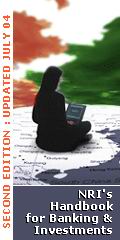|



|
Financial institutions can absorb blows from turbulent markets
5 September 2007: The global debt markets are in the midst of a jarring repricing of risk. Uncertainty abounds, but an article recently published by Standard & Poor's Ratings Services says that the financial sector as a whole has sufficient fundamental strength to absorb the significant bank loan and securities markdowns, reduced earnings in investment banking and trading, and increased credit losses that are sure to come in the second half of 2007.
The article, which is titled "Strong Fundamentals And Central Banks Should See Financial Institutions Through Rough Markets," says that although Standard & Poor's had expected a correction, the complexity of financing structures and risk-transfer strategies in the financial sector are prolonging the repricing process and causing risks to propagate in unexpected ways this time around. Short-term liquidity has tightened, not only in asset-backed commercial paper (ABCP) but also in every area of the money markets except Treasury bills. This has forced central banks to take actions to bolster market confidence.
"During this correction, credit market participants are questioning the financing structures as much as the underlying credit risk of borrowers, which remains generally good by historical standards," noted Standard & Poor's credit analyst Scott Bugie. Nervous investors are requiring additional risk premiums for most structured instruments-or are avoiding structured investments altogether-even though realized losses in highly rated structured securities have been insignificant so far this year.
Tight liquidity is forcing the prices of private-label U.S. residential mortgage-backed securities (RMBS), particularly subprime RMBS, down to unanticipated levels, throwing security valuations into disarray.
"Painful though it will be, the correction ultimately should be healthy for the financial sector, leading to more differentiated pricing of credit and less-aggressive practices in mortgage lending and the leveraged loan market," Mr. Bugie added. The adjustment process will be especially difficult for specialized mortgage lenders, investors with high concentrations in the affected categories of RMBS, holders of hung leveraged loans (those forced onto the balance sheets of
underwriters because they couldn't clear the market), and institutions that rely on short-term wholesale funding, particularly through structured vehicles. Indeed, the correction already has dented the credit standing of several financial firms in the U.S. and Europe.
The fundamental strength of the global financial sector remains sound, and the sector has good medium-term growth prospects. Consequently, financial groups that have the necessary strength and financial resources will continue to look for acquisition opportunities, particularly at the more distressed prices to be found during this turbulent correction in the credit markets.
(This is press release of Standard & Poor's)
RELATED ARTICLES
Special section on Sub Prime ...Click here
Bank rating downgrades unnecessary on wide scale ...Click here
US Federal Reserve cuts discount lending rate ...Click here
Fitch on sub prime affect on Asia-Pacific Banks ...Click here
Moody's on sub prime exposures of US banks ...Click here
S&P report on today's credit market risks ...Click here
CLICK FOR MORE FEATURES & STORIES
|
|


|






